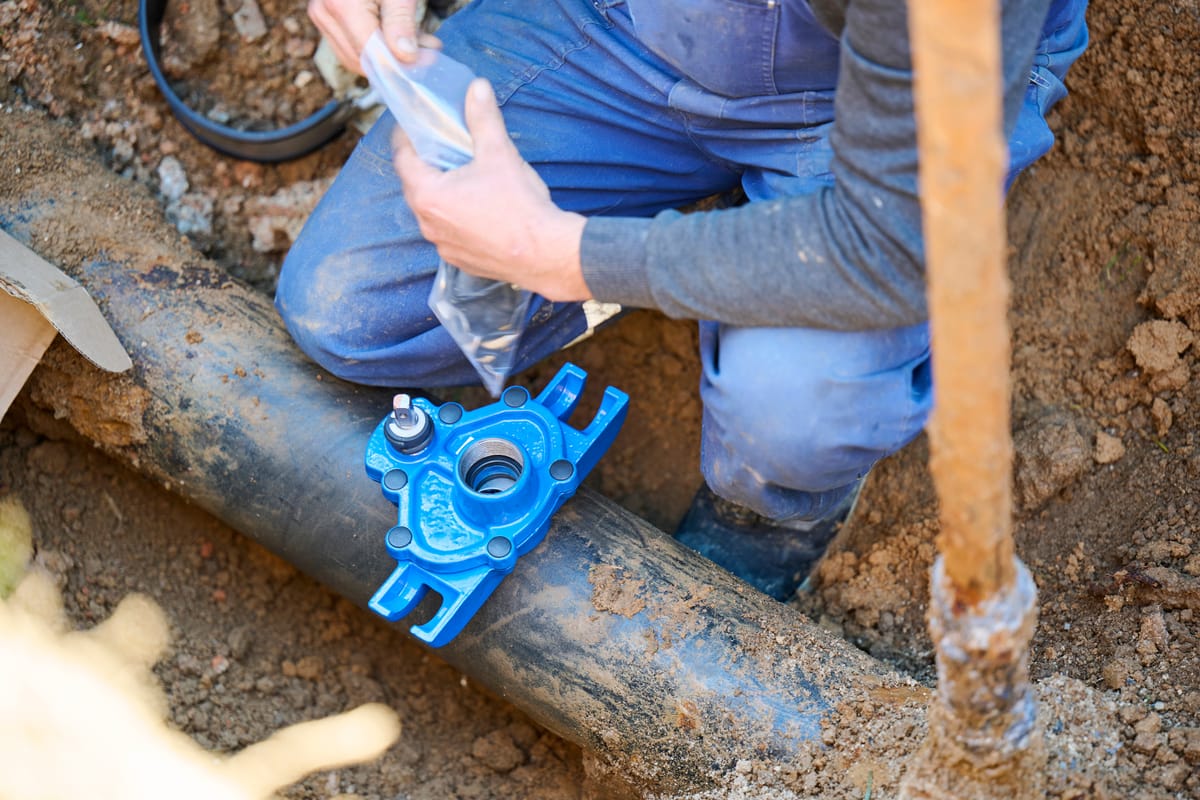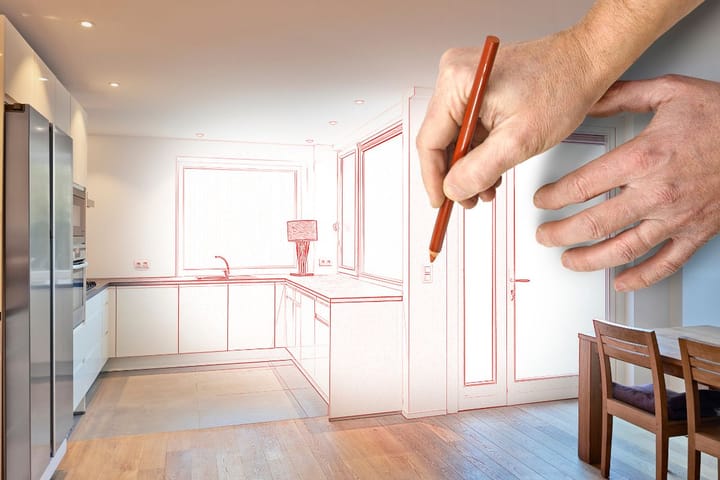The Future Of Infrastructure Rehabilitation: Exploring The Advantages Of CIPP Pipe Lining
For property managers and homeowners, CIPP lining offers a no-dig solution to repair pipes, ideal for sustainable city and utility upgrades.

Are you a property manager or a homeowner who is planning to implement a pipe lining project? Fixing old pipes and sewer systems is tough, but cured-in-place pipe (CIPP) lining is a smart solution. It can effectively repair pipes without digging a lot, offering many advantages. This makes it a great choice for cities and utility companies working towards strong and sustainable urban areas. As cities expand, CIPP lining is becoming crucial for upgrading our infrastructure. It strives to build a future where development aligns with environmental care and community well-being.
This article explores the future of infrastructure rehabilitation, emphasizing the advantages of CIPP pipe lining.
What Is Cured-In-Place Pipe Lining?
CIPP pipe lining is a trenchless technology used to rehabilitate existing pipelines without extensive excavation. The CIPP process involves creating a new pipe within the existing damaged one, effectively eliminating the need for costly and disruptive traditional dig-and-replace methods. This technique applies to underground structures, including sewer lines, stormwater drains, and potable water pipes.
CIPP Pipe Lining Applications
Municipalities often use CIPP lining to rehabilitate aging or damaged sewer lines and stormwater pipes without requiring extensive excavation. This helps minimize disruption to communities and reduces costs compared to traditional pipe replacement methods.
Owners of commercial buildings with damaged or deteriorating pipes, including plumbing and drainage systems, may opt for CIPP lining to avoid the disruptions and costs associated with traditional pipe replacement.
Homeowners facing issues with their sewer or drainage pipes may consider CIPP lining as an alternative to excavation. This method is particularly advantageous in residential areas where minimizing disruption and maintaining aesthetics are important.
In areas with historical significance or architectural value, where digging may not be desirable, CIPP lining can be a suitable method for preserving the integrity of the surroundings while addressing pipe issues.
Advantages of CIPP Pipe Lining
CIPP lining is used for preventive maintenance to address early signs of pipe deterioration, such as cracks, leaks, or corrosion. This proactive approach helps prevent more extensive damage and costly repairs in the future. Below are the advantages of CIPP pipe lining:
- Cost-Effective Rehabilitation
One of the most significant advantages of CIPP pipe lining is its cost-effectiveness compared to traditional excavation and replacement methods. Eliminating extensive digging reduces labor costs, equipment expenses, and the overall project duration.
Additionally, CIPP can rehabilitate multiple pipes in a single project, further reducing expenses. The cost-effectiveness of CIPP makes it an attractive solution for municipalities and utility companies grappling with limited budgets while striving to maintain and upgrade their infrastructure.
- Minimal Disruption to Communities
Traditional pipeline rehabilitation methods often require extensive excavation, disrupting affected communities' traffic, businesses, and daily life. CIPP, being a trenchless technology, minimizes such disruptions.
The process is carried out with minimal excavation, reducing the impact on roadways, sidewalks, and landscaping. This is especially advantageous in densely populated urban areas where minimizing disruption is critical for public safety and community well-being.
- Speed and Efficiency
CIPP offers a rapid and efficient solution for pipeline rehabilitation. Traditional methods usually take weeks or months to complete, causing prolonged inconveniences for residents and businesses.
In contrast, CIPP projects can often be finished in days. The streamlined process, which involves less manual labor and excavation, allows for quicker project completion, reducing the overall impact on the affected area and its residents.
- Environmental Sustainability
As the global focus on sustainability grows, infrastructure rehabilitation methods that minimize environmental impact are gaining importance. CIPP, by being a trenchless technology, significantly reduces the carbon footprint associated with traditional dig-and-replace methods.
The process requires less heavy machinery, which leads to lower energy consumption and emissions. Additionally, the seamless nature of CIPP eliminates joints, reducing the risk of leaks and preventing contamination of soil and water sources.
- Versatility in Application
CIPP is a versatile technology applicable to various types of pipes and systems. Whether rehabilitating sewer lines, stormwater drains, or potable water pipes, CIPP can accommodate different pipe diameters, materials, and configurations.
This versatility makes it a valuable tool for municipalities and utility companies facing various infrastructure challenges. The ability to address multiple types of pipelines with a single technology streamlines the decision-making process for infrastructure managers.
- Long-Term Durability
CIPP pipe lining creates a durable and corrosion-resistant inner layer within the existing pipeline. The cured resin forms a strong bond with the host pipe, providing structural integrity and preventing further deterioration.
This long-term durability is a key advantage, as it extends the lifespan of the rehabilitated infrastructure, reducing the frequency and cost of future maintenance. The enhanced resistance to corrosion is particularly beneficial in regions with aggressive soil conditions or corrosive elements present in the conveyed fluids.
- Compliance with Regulatory Standards
The rehabilitation of underground infrastructure is subject to stringent regulatory standards aimed at ensuring the safety and reliability of these systems. CIPP pipe lining meets and often exceeds these standards, which is a compliant solution for infrastructure rehabilitation.
By adopting CIPP, municipalities and utility companies can confidently address aging infrastructure issues while adhering to regulatory requirements, avoiding potential fines or legal complications.
The Future Outlook
As the advantages of CIPP pipe lining become increasingly apparent, the future of infrastructure rehabilitation looks promising. The technology is likely to see continued growth and adoption across the globe, driven by the need for cost-effective, environmentally sustainable, and minimally disruptive solutions.
Ongoing research and development efforts are expected to enhance the versatility and effectiveness of CIPP further, expanding its application to address an even broader range of infrastructure challenges.
The evolution of CIPP technology may also involve the integration of smart and monitoring capabilities. Embedding sensors within the cured liners could enable real-time monitoring of the rehabilitated pipelines, providing valuable data on performance, potential issues, and overall system health. This proactive approach to infrastructure management aligns with the growing trend of incorporating smart technologies to optimize urban systems.
How Cured-In-Place Pipe Lining Work
The CIPP process begins with inserting a flexible liner saturated with resin into the existing pipe. The inflated liner and cured resin create a structurally sound and durable inner pipe, forming a seamless, jointless, and corrosion-resistant pipeline that restores the system's functionality. This innovative approach has garnered attention for its cost-effectiveness, efficiency, and minimal environmental impact.
CIPP lining is a trenchless method used for rehabilitating damaged or deteriorating pipelines. It is a cost-effective and efficient way to repair pipes without extensive excavation.
Here is an overview of the Cured-In-Place Pipe lining process:
- Inspection and Cleaning
The first step involves inspecting the existing pipeline to identify any damage, cracks, or other issues.
The pipe is cleaned with high-pressure water or other methods to remove debris, corrosion, and any other substances that may interfere with the lining process.
- Lining Material Insertion
A flexible lining material, often made of materials like fiberglass or felt, is impregnated with a resin or epoxy mixture.
The lining material is then inserted into the damaged pipe using inversion, pulling, or other methods, depending on the specific CIPP system.
- Inflation and Conforming
Once inside the existing pipe, the lining material is inflated to conform to the shape of the host pipe.
The resin or epoxy is evenly distributed, creating a seamless and tight-fitting lining.
- Curing
The curing process involves allowing the resin or epoxy to harden and form a solid, durable lining. This can be achieved through various methods, such as hot water, steam, or ultraviolet (UV) light.
- Final Inspection
This step ensures the new lining is smooth, continuous, and defects-free.
CIPP pipe lining offers several advantages, including minimal disruption to the surrounding environment, reduced costs compared to traditional excavation methods, and a faster rehabilitation process. It is commonly used to repair sewer lines, stormwater pipes, and underground conduits.
How To Choose A CIPP Pipe Lining Specialist
Choosing the right CIPP (Cured-In-Place Pipe) lining specialist is crucial for the success of your pipeline rehabilitation project. Look for a company with extensive experience in CIPP pipe lining, considering the number of years in the industry and specific completed projects. Ensure the CIPP specialist is properly licensed and certified and meets industry standards.
Request references or check online reviews to gauge reliability. Confirm appropriate insurance coverage, including liability insurance. Inquire about the equipment and technology used for CIPP pipe lining, ensuring they are up-to-date. Confirm compliance with industry standards for quality and durability. Discuss the project timeline and assess flexibility in adapting to challenges.
Obtain detailed, transparent cost estimates and understand the payment structure. Choose a specialist who communicates effectively and collaborates with stakeholders. Consider warranty offerings and post-installation support for maintenance services. By considering these factors, you can make an informed decision when selecting a CIPP pipe lining specialist for your project.
Conclusion
The future of infrastructure rehabilitation is being reshaped by innovative technologies such as CIPP pipe lining. This trenchless solution offers many advantages, from cost-effectiveness and minimal disruption to environmental sustainability and long-term durability. As cities and communities strive to maintain and upgrade their aging infrastructure, CIPP emerges as a transformative and forward-looking solution that addresses current challenges and contributes to building resilient and sustainable urban environments. With ongoing advancements and increasing adoption, CIPP shapes the future landscape of infrastructure rehabilitation.




Comments ()